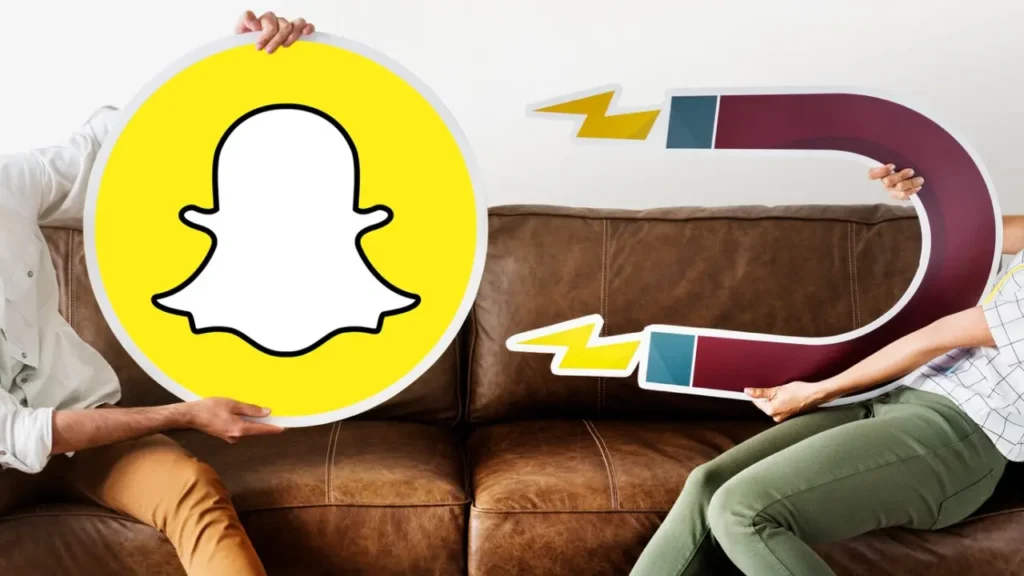Snapchat determines friend recommendations based on the information you provide to the app. This includes your contacts, existing friends, and user data generated through your interactions with the platform.
All this information is processed using sophisticated analytics software, which generates a list of recommended friends. If you’d like to learn more about how Snapchat determines these recommendations, keep reading.
What are Snapchat Friend Suggestions Based on?
Before diving into the details, it’s important to understand why Snapchat offers friend suggestions in the first place. The app’s goal is to keep users engaged, and one way it achieves this is by providing a wide network of friends to interact with.
To make this possible, Snapchat combines multiple factors to generate friend recommendations—ensuring users always have someone new to connect with.
Snapchat Reviews Your Contacts
When you first log in to Snapchat, the app requests permission to access your contacts. Since most users access Snapchat on their phones—where contacts are typically stored—this allows the app to quickly build your social network.
You can choose to send friend requests to specific people or your entire contacts list. Snapchat simplifies this process by automating friend suggestions, helping you create an initial friends list effortlessly. Even if you don’t immediately add everyone, the app retains access to your contacts and may later recommend people from that list if you haven’t already connected with them.
List Friends of Friends
While contact details help suggest people you already know, Snapchat goes further by recommending users you’re likely to engage with regularly. This includes reconnecting you with old friends or introducing you to people you may already know—leveraging the concept of friends of friends.
The logic is simple: if you and another user share mutual friends, there’s a good chance you know each other. The more mutual friends you have, the stronger the likelihood. That’s why Snapchat prioritizes suggesting users with the highest number of shared connections.
Of course, this approach isn’t foolproof. That’s why Snapchat combines mutual friends with advanced algorithms and other friend-finding techniques. If the system predicts high interaction potential between you and another user, it cross-references your mutual connections. When shared friends exist, Snapchat will likely suggest adding each other—further refining its recommendations.
Analyzing Mutual Friends and Social Connections on Snapchat
One of Snapchat’s most interesting features is its ability to highlight mutual friends and social connections. When you add someone on Snapchat, you can see exactly which friends you have in common—giving you a clearer picture of how people in your social circle are interconnected.
For example, if John adds Michael as a friend and they share three mutual friends—Rachel, Ross, and Phoebe—it suggests a preexisting connection beyond just the app. This feature not only strengthens trust between new connections but also helps users analyze their own position within their social networks.

By examining mutual friends, individuals can identify which relationships are strongest and which may be more peripheral. This provides valuable insights into group dynamics and personal connections.
Ultimately, Snapchat’s mutual friends feature offers users a deeper understanding of their social circles, helping them navigate relationships and recognize how they—and others—fit into the broader network.
Taking Clues from Group Messages
The reasoning behind this feature is straightforward: if you’re in a group chat with someone who isn’t yet your friend, there’s a good chance you know them. Snapchat aims to suggest people you’ll engage with, so it naturally considers those you already communicate with in groups.
While the app frequently recommends group chat participants, the system goes deeper than surface-level connections. It employs algorithms similar to the “friends of friends” approach, analyzing patterns across multiple group chats. When direct group chat suggestions are exhausted, Snapchat may identify users who appear in several friends’ group conversations, effectively mapping out an entire network of potential connections.
These recommendations are then refined using additional algorithmic factors to predict successful matches. This layered approach means you might receive surprisingly relevant suggestions—even someone from just one group chat you’d otherwise overlook. The system continuously works to surface the most likely meaningful connections.
Comparing Common Interests
Now we move to the more advanced aspects of Snapchat’s recommendation system – where the app’s ability to predict your preferences might feel surprisingly precise.
Like all social platforms, Snapchat prioritizes engagement. The more time you spend interacting with content, the greater their monetization opportunities. This means the app carefully tracks your activity to understand your interests.
For example, if you frequently watch ice dancing videos, Snapchat notes this preference. It then uses this data – along with location information, mutual connections, and other factors – to suggest potential friends who share your interest. The logic is simple: if you connect with fellow ice dancing enthusiasts, you’re likely to engage more with the app.
However, Snapchat’s analysis goes beyond single interests. It examines your entire consumption patterns to determine what content captivates you and which types of users you’d most likely interact with. While this data helps rank potential friend suggestions, Snapchat generally avoids recommending complete strangers. Instead, it focuses on strengthening connections within extended networks – prioritizing people you might know or share communities with, rather than random users.
The system continuously refines these recommendations by cross-referencing multiple data points, ensuring suggested connections feel relevant rather than arbitrary.
Tracking How You Interact with the Platform
The way you engage with Snapchat also influences its recommendations, though this operates differently from content interest tracking. Rather than focusing on what you watch, it analyzes how you typically use the app.
Do you primarily view friends’ Stories, or spend more time watching promotional content? Are you an active chatter, or more of a passive viewer? While these behavioral patterns don’t drive friend suggestions as directly as mutual connections or shared interests, they still play a role in the algorithm.
For instance, if you frequently use Snapchat for messaging, the app will prioritize suggesting friends who are also active communicators. The underlying principle remains engagement—Snapchat aims to connect you with people whose usage patterns complement yours, creating more opportunities for meaningful interaction on the platform.
By understanding your typical behavior, the app refines its suggestions to include users who will likely engage with you in ways you find appealing—whether through frequent chats, shared Story viewing, or other interactive features.
